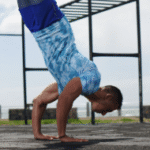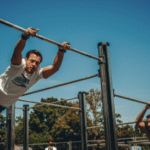Hot and Cold Therapy for Injury Rehabilitation
Hot and cold therapy, also known as contrast therapy, is a widely recognized method for injury rehabilitation. It involves the alternating application of heat and cold to the injured area, utilizing the contrasting physiological effects of these temperatures to reduce pain, inflammation, and promote healing. Here’s a detailed explanation of how hot and cold therapy can be effectively used for injury rehabilitation:
Understanding the Mechanisms
Cold Therapy (Cryotherapy):
Vasoconstriction: Cold temperatures cause blood vessels to constrict, reducing blood flow to the injured area. This helps to:
Decrease inflammation and swelling: By limiting blood flow, cold therapy minimizes the influx of inflammatory substances and fluids that contribute to swelling.
Numb nerve endings: This can provide temporary pain relief and reduce muscle spasms.
Heat Therapy (Thermotherapy):
Vasodilation: Heat application causes blood vessels to dilate, increasing blood flow to the injured area. This helps to:
Deliver oxygen and nutrients: Increased blood flow brings essential oxygen and nutrients to the injured tissues, promoting healing and repair.
Relax muscles: Heat can relax muscles, reduce stiffness, and increase range of motion.
Remove waste products: Improved circulation helps to flush out metabolic waste products that can accumulate in injured tissues.
Benefits of Hot and Cold Therapy in Rehabilitation
Pain Management: Both cold and heat therapy can be effective for pain management. Cold therapy numbs the area, while heat therapy soothes and relaxes muscles and joints.
Reduced Inflammation: Cold therapy is particularly beneficial in the early stages of injury to reduce inflammation and swelling.
Improved Circulation: Heat therapy enhances blood flow, promoting the delivery of oxygen and nutrients to the injured area for faster healing.
Increased Range of Motion: Heat therapy can help improve flexibility and range of motion by relaxing muscles and reducing stiffness.
Enhanced Healing: The combination of reduced inflammation and improved circulation can accelerate the healing process.
When to Use Cold Therapy
Acute Injuries: Cold therapy is most effective in the acute phase of an injury (the first 48-72 hours) to minimize inflammation and swelling.
Pain and Swelling: Use cold therapy for injuries that are accompanied by pain, swelling, and inflammation.
Examples: Sprains, strains, bruises, acute muscle tears, and post-surgical swelling.
When to Use Heat Therapy
Chronic Pain: Heat therapy is often used for chronic pain conditions, such as arthritis or muscle stiffness.
Muscle Relaxation: Heat can help relax muscles and reduce tension, making it beneficial for muscle spasms or tightness.
Stiffness: Heat can improve flexibility and range of motion in stiff joints or muscles.
Examples: Chronic muscle pain, joint stiffness, muscle spasms, and osteoarthritis.
Contrast Therapy
Contrast therapy involves alternating between cold and heat applications. This can be particularly beneficial for:
Subacute Injuries: Injuries that are transitioning from the acute phase to the subacute phase (after the initial 72 hours).
Muscle Soreness: Contrast therapy can help reduce muscle soreness and fatigue after intense exercise.
Chronic Pain: Alternating between hot and cold can provide pain relief and improve circulation in chronic conditions.
How to Apply Hot and Cold Therapy
Cold Therapy:
Ice packs: Apply ice packs wrapped in a towel to the injured area for 15-20 minutes at a time, several times a day.
Cold baths: Immerse the injured area in cold water for 10-15 minutes at a time.
Cold therapy machines: These devices provide continuous cold therapy with controlled temperatures.
Heat Therapy:
Heating pads: Apply heating pads to the injured area for 15-20 minutes at a time.
Warm baths or showers: Soak in a warm bath or take a warm shower for 15-20 minutes.
Hot packs: Use hot packs wrapped in a towel for 15-20 minutes at a time.
Ultrasound therapy: This professional treatment uses sound waves to generate heat deep within tissues.
Safety Considerations
Avoid Direct Contact: Never apply ice or heat directly to the skin. Always use a towel or other barrier to prevent burns or skin damage.
Time Limits: Follow recommended application times to avoid tissue damage.
Consult a Healthcare Professional: If you have any underlying health conditions or concerns, consult with a healthcare professional before using1 hot or cold therapy.
Conclusion
Hot and cold therapy are valuable tools in injury rehabilitation, offering pain relief, reducing inflammation, and promoting healing. By understanding the appropriate application of each therapy and considering factors like the type and stage of injury, you can effectively incorporate hot and cold therapy into your rehabilitation plan and optimize your recovery process.

Hot and Cold Therapy for Injury Rehabilitation
Route
Calisthenics Gym Houston Functional Bodyweight Training
Secondary phone: (346) 483-3195
Email: info@calisthenicsclubhouston.com
URL: https://calisthenicsclubhouston.com/
Monday 6:00 AM - 7:00 PM Tuesday 6:00 AM - 7:00 PM Wednesday 6:00 AM - 7:00 PM Thursday 6:00 AM - 7:00 PM Friday 12:00 PM - 6:30 PM Saturday 9:45 AM - 12:00 PM Sunday 3:00 PM - 5:00 PM





